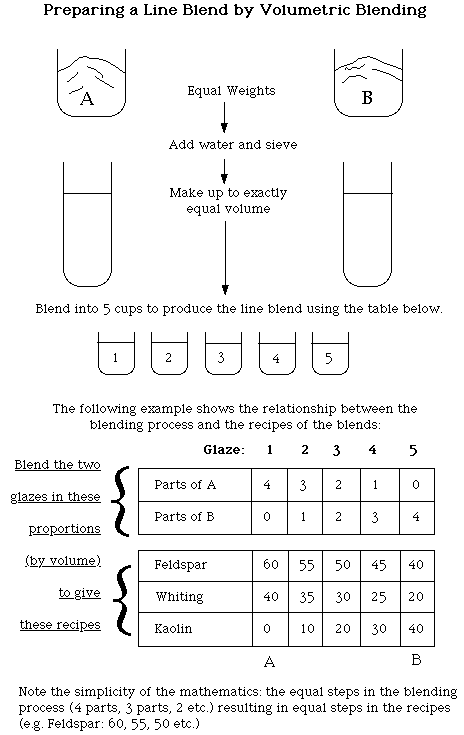Line Blends
An explanation of the theory and practice of line blending for step-by-step variation of some variable(s) in glaze research.
Copyright ©1998 by Ian Currie
A line blend is where we blend two glazes together in various proportions to give a series of glazes of intermediate composition.
We must follow a simple rule so we can work out the dry batch recipes of the intermediate glazes.
The trick is to weigh out the same amount of each of the two blending glazes, and make them up with water to exactly the same volume. Once we've done this, and assuming we observe the necessary precautions outlined in the Volumetric Blending page, it's easy to work out the recipes of intermediate (blended) glazes.
The line blend is a useful experimental tool for the potter. It allows one to fine tune glaze composition, and by careful choice of the two blending glazes, one can isolate a single variable and discover the role of that variable in the glaze being studied.
Here is an example of a line blend using colourants:
ANY HORIZONTAL LINE BELOW CONTAINS:
Glaze A: Base glaze
Glaze B: Base glaze + 4% (or 8%)

Volumetric blending is often used in glaze experiments because it enables lots of related glazes to be prepared in a short time.
